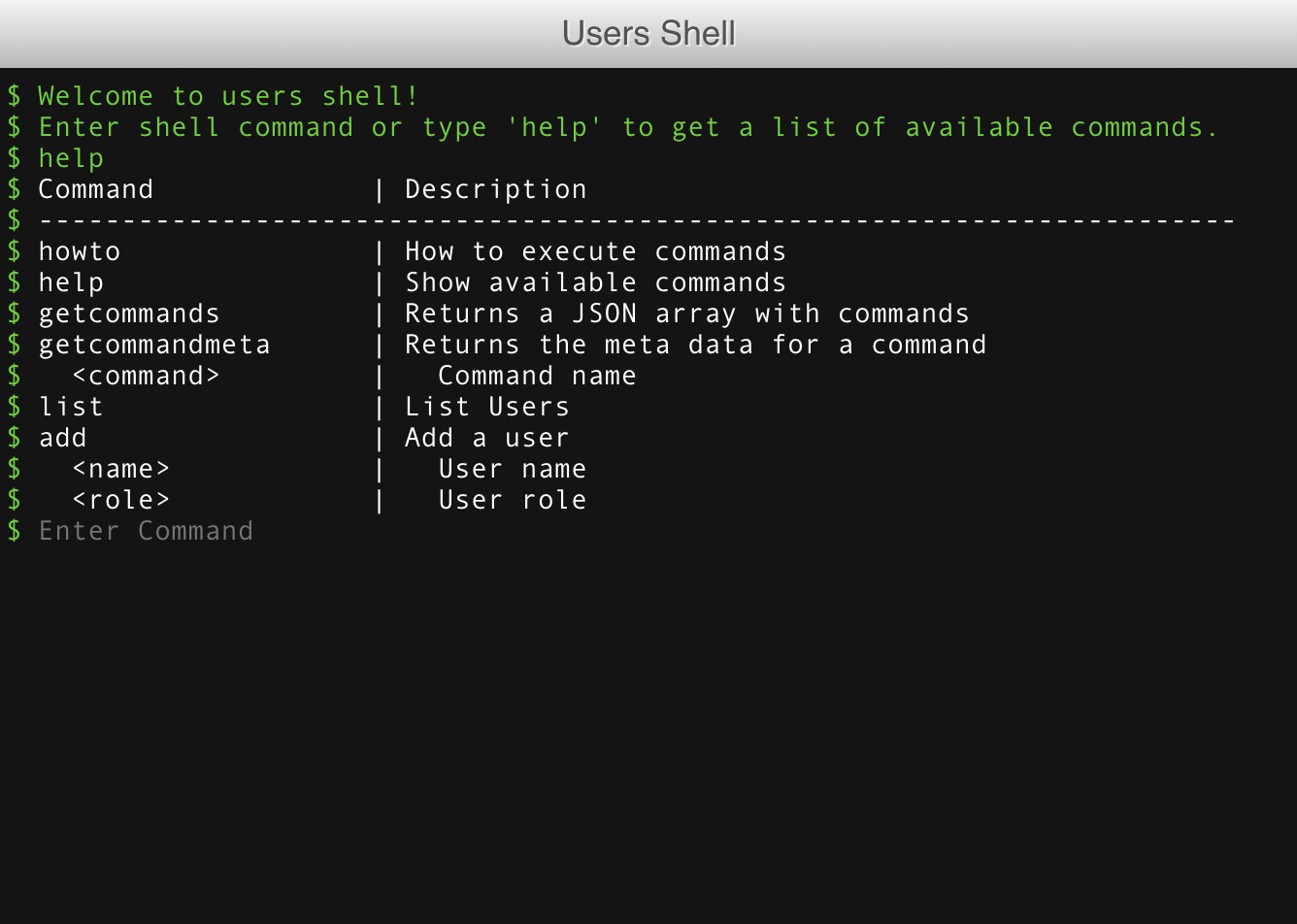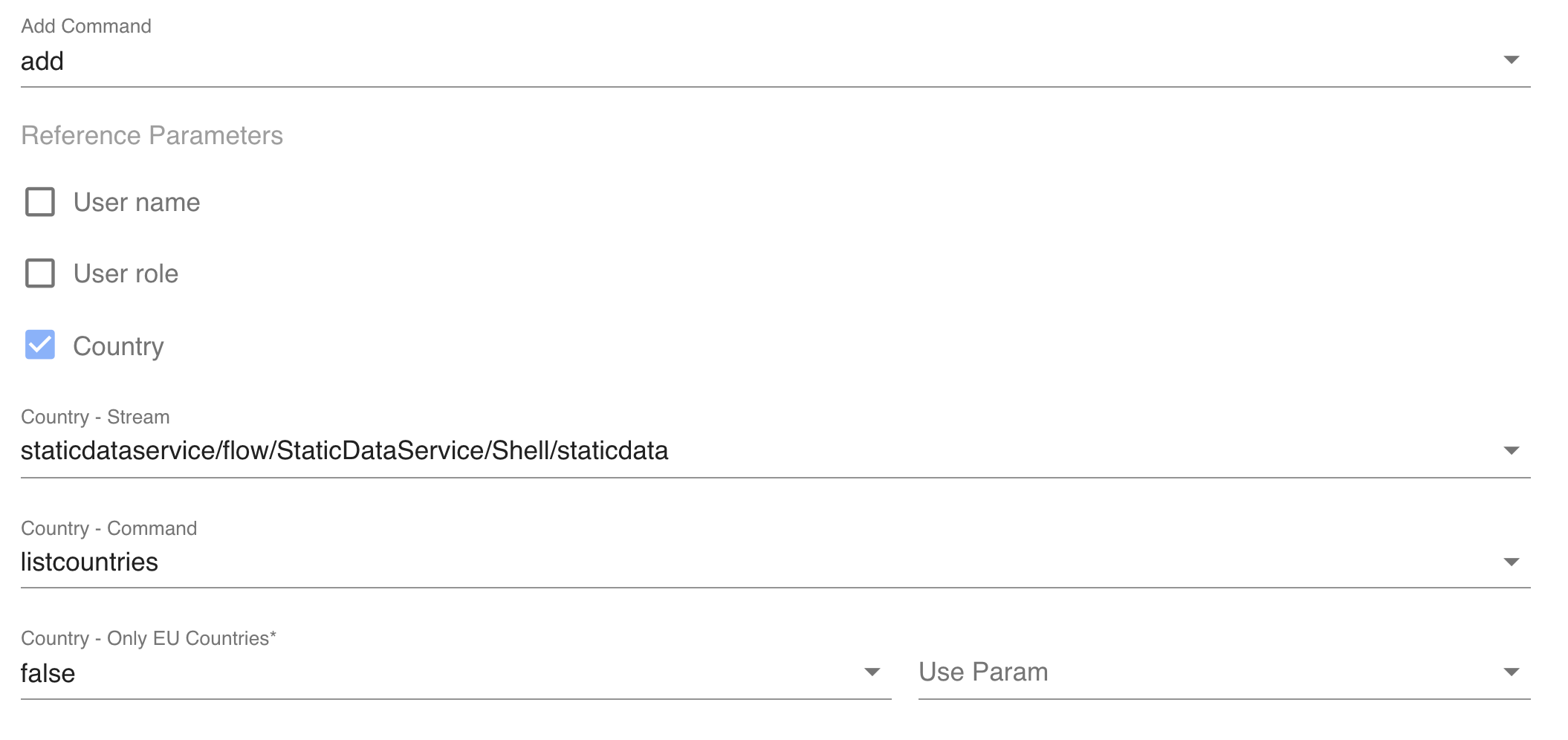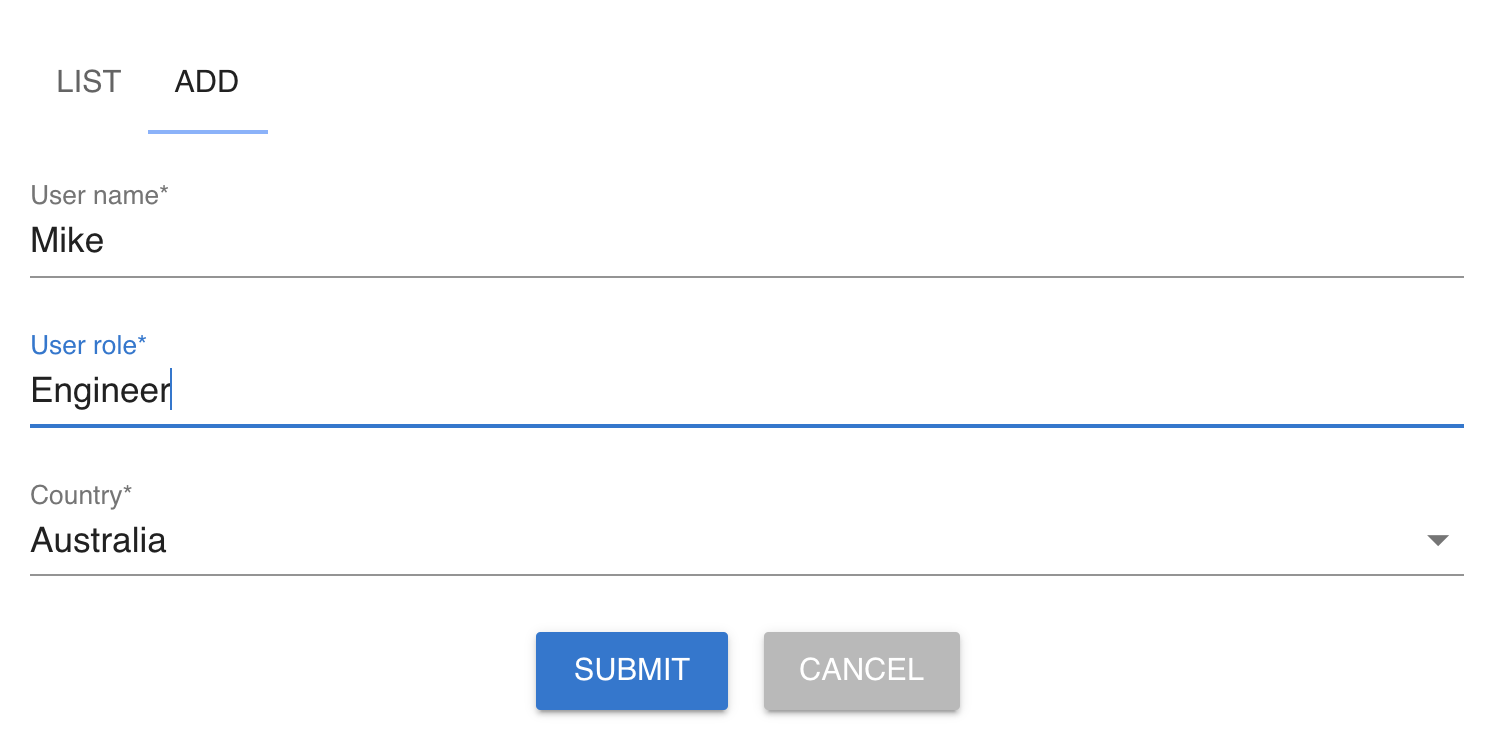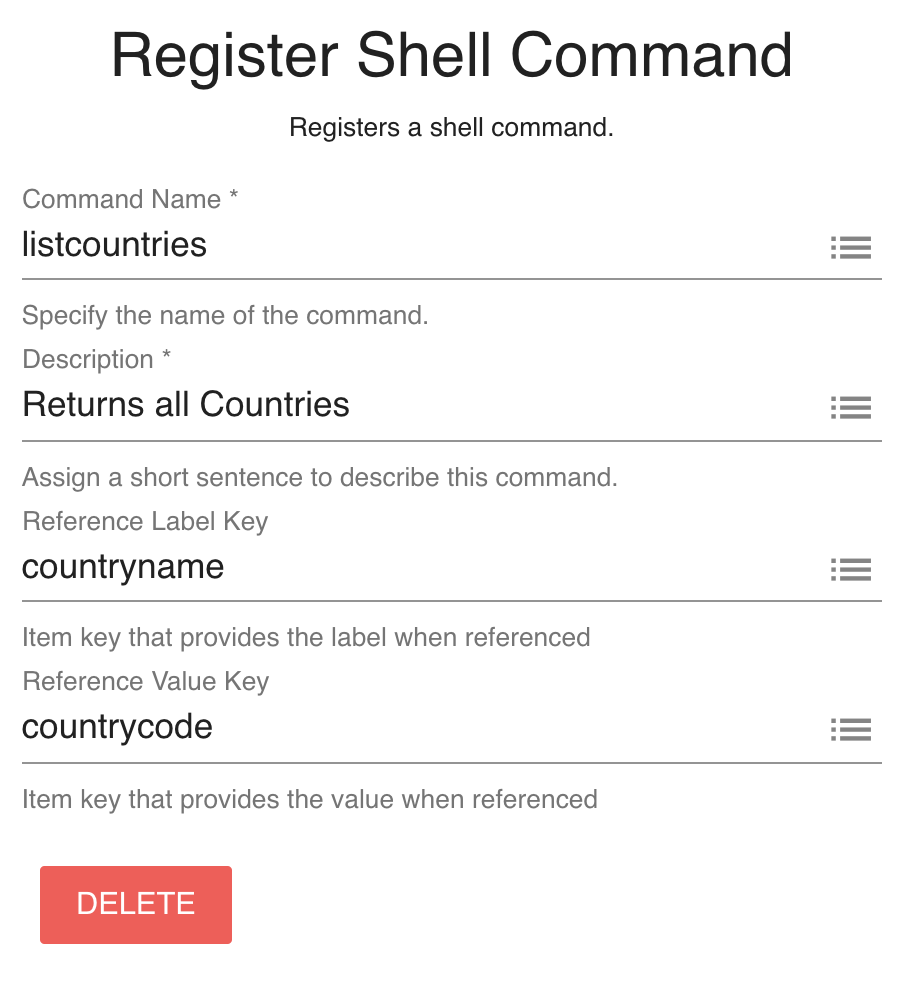Dashboard Components
3 dashboard components enable users to interact with a shell.
Terminal
The shell's command-line interface. Select the shell's stream name, and you will be able to execute the shell commands.

Every shell automatically registers several commands, such as help, that provide extra information for the Terminal.
Form
Forms take a single shell command and automatically display a form with a field for each command parameter.

Shell CRUD
A Shell CRUD component takes 4 commands (Add, List, Update, and Delete) and displays an interface for your typical CRUD operations.

Reference Parameters (Advanced)
There may be times where you would like to use the results of another command as the value for a parameter. For example, a createuser command that required a countryid parameter. Since you cannot know every country's id, you'll need to send a listcountries, find the entry you require and note the id value. It would be easier if you could have a Select input, and the user could select the country and use its id. That's what Reference Parameters are for.

Above, we are using the results from the listcountries command in a different stream. Make sure you have granted access to the target stream if it's missing.
If you have a reference command that depends on user input, you can set the sibling parameter from the Use Param dropdown.

Because we've set up our reference command, the user sees a dropdown list of country names while still sending the country id to the shell command.

In the above example, we use the user input value for User name as the listcountries command's onlyeu parameter.
Reference Command Label & Value Keys
You might be wondering if the reference command returns an array of JSON objects, how does the input know which property (i.e., countryid) to use for value or text? The answer is they are set in the Register Shell Command component.
Continuing with our listcountries example, given the results set below:
[
{
"countryname": "Germany",
"countryid": 1
},
{
"countryname": "Australia",
"countryid": 2
},
// ...
]We would configure our command with the following reference keys:

